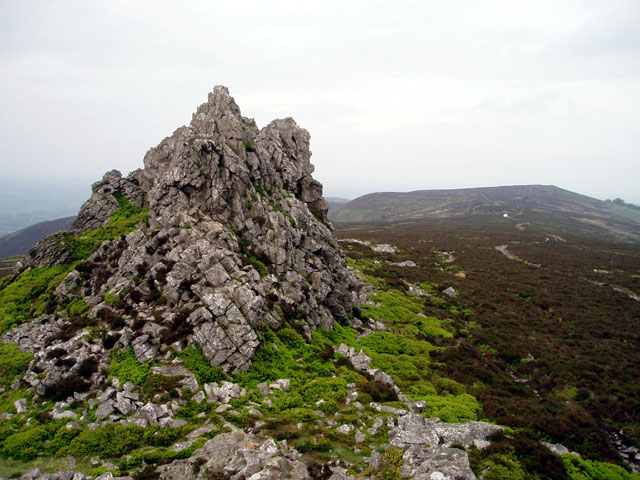Folklore of the Stiperstones

Introduction
The dramatic, rugged look of the Stiperstones—with its jagged rock towers and eerie quiet—has naturally become a breeding ground for myths and folklore. These legends aren’t just stories; they give the landscape cultural meaning, making its features feel both supernatural and historical.
The Devil’s Work
The most famous story centres on the Devil’s Chair, the biggest rock outcrop on the ridge. Local legend says the Devil was carrying an apron full of stones he’d grabbed in Ireland, planning to use them to fill the valley on the far side of the ridge—appropriately known as Hell’s Gutter. He sat down on the hill for a quick rest, but when he stood up, his apron strings snapped and the stones spilled out, forming the rock piles seen today.
A darker version claims that on the longest night of the year, the Devil returns to his chair to gather witches, imps, and other ne’er-do-wells to choose their earthly ruler. A related prophecy says that if the Stiperstones ever sinks completely into the earth, England will collapse—so the Devil periodically throws himself into the chair to try to smash the hill into the ground.
Wild Edric, the Ghostly Knight
Another key figure is Wild Edric, a Saxon nobleman who fought against the Norman invaders in 1066. After his resistance, the story goes that he and his men—along with his fairy wife, Godda—were cursed and locked away inside one of the area’s old lead mines.
The curse says that whenever England faces a grave threat, Edric and his host must ride out from their underground prison to fight on the country’s behalf. People have claimed to see this spectral host riding out before major conflicts, including the Crimean War and both World Wars. Miners even swore they could hear Edric’s ghost knocking deep in the mines, guiding them to rich deposits of ore.